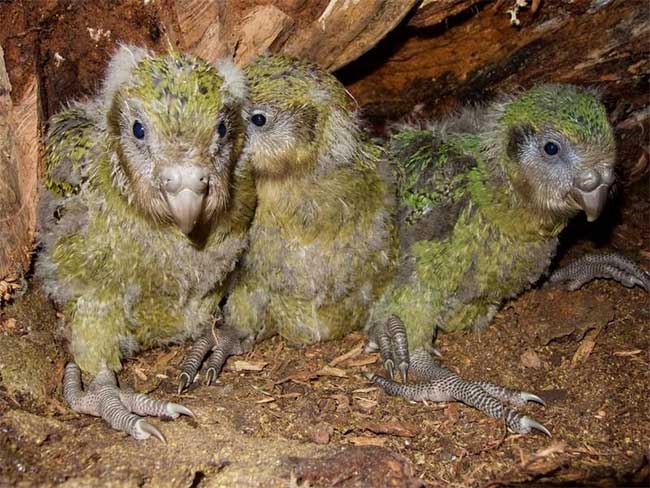The Kakapo is the only flightless parrot species in the world, featuring bright green feathers and a face resembling that of an owl, and it is primarily nocturnal.
Scientists have discovered numerous ancient fossils of this species throughout New Zealand, making it one of the country’s endemic animal species. In the context of the Kakapo facing the threat of extinction, New Zealand scientists have been striving to find conservation solutions for this parrot through genome sequencing.

The Kakapo parrot has bright green feathers and a face resembling that of an owl. Image: Reuters
According to a study published on August 29 in the international journal Nature Ecology & Evolution, scientists sequenced the genomes of 169 Kakapo parrots, nearly the entire population of this species, as they began their research project back in 2018. The study indicates that by delving into the DNA of this parrot, scientists can now better predict the causes of the Kakapo’s population decline, such as genetic traits that make them vulnerable to diseases or reproductive issues.
The Kakapo primarily resides in forests, areas rich in underbrush and shrubbery. A peculiar characteristic of these “night owls” is that they are strictly herbivorous. Instead of consuming meat, they feed on almonds and fruits from trees such as Muselin, Rimu, Matai, and Totara—species that typically bloom in spring and summer. The Kakapo is also the only parrot that practices polygamy. However, female Kakapos exhibit a rather unusual trait: they are not fond of mating. Their mating frequency is very low, sometimes occurring only once every two years. Consequently, their remaining population is extremely small, barely enough to be counted on one hand, making it quite challenging for males to find partners to sustain their lineage.
The high-quality genome sequencing is funded through the Genomics Aotearoa project at the University of Otago, which is assisting New Zealand in managing the health of this critically endangered species. Researchers indicate that these advanced techniques could also be applied to aid in the conservation of other endangered species.


















































